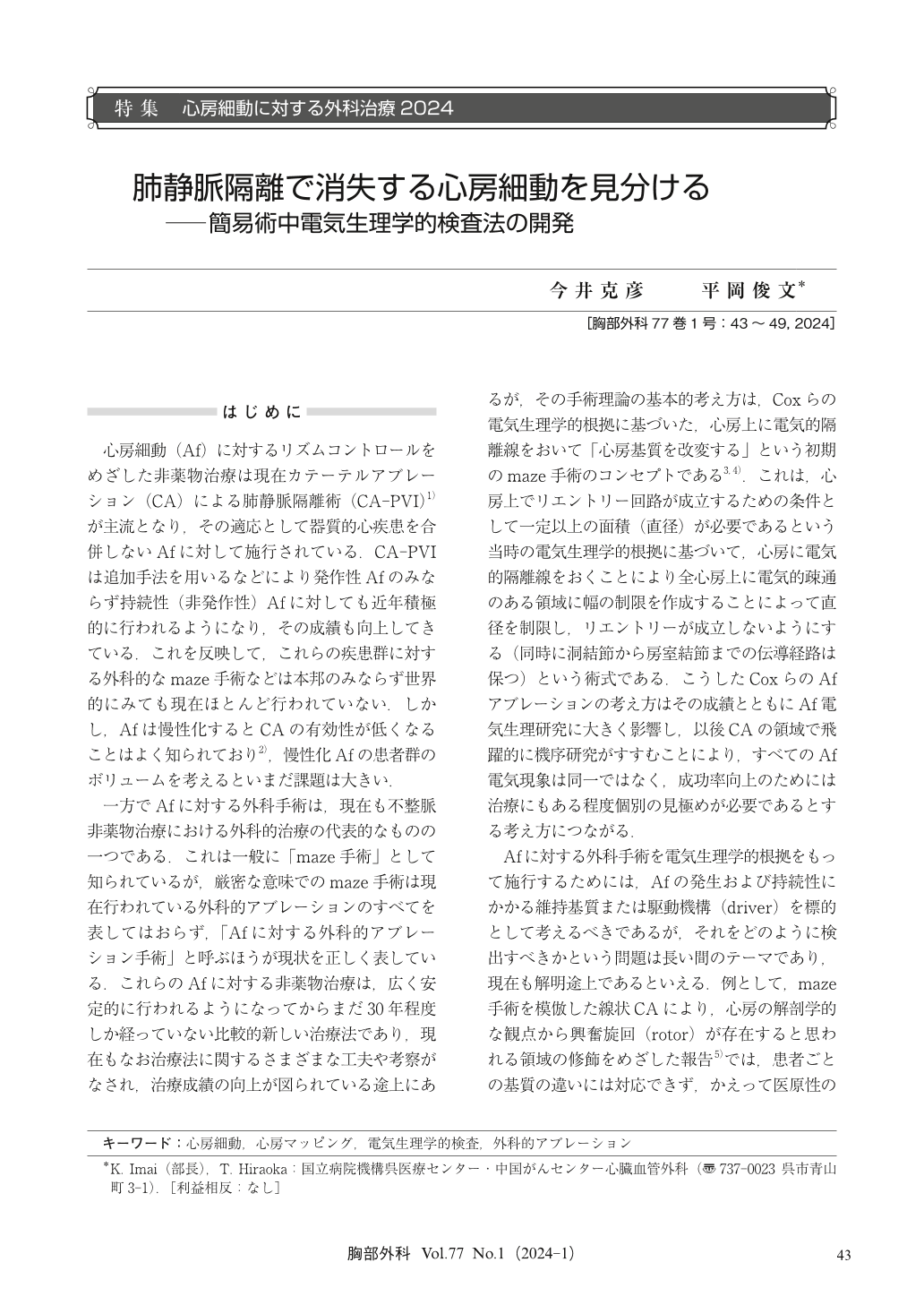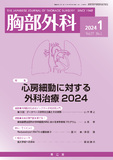Japanese
English
- 有料閲覧
- Abstract 文献概要
- 1ページ目 Look Inside
- 参考文献 Reference
心房細動(Af)に対するリズムコントロールをめざした非薬物治療は現在カテーテルアブレーション(CA)による肺静脈隔離術(CA-PVI)1)が主流となり,その適応として器質的心疾患を合併しないAfに対して施行されている.CA-PVIは追加手法を用いるなどにより発作性Afのみならず持続性(非発作性)Afに対しても近年積極的に行われるようになり,その成績も向上してきている.これを反映して,これらの疾患群に対する外科的なmaze手術などは本邦のみならず世界的にみても現在ほとんど行われていない.しかし,Afは慢性化するとCAの有効性が低くなることはよく知られており2),慢性化Afの患者群のボリュームを考えるといまだ課題は大きい.
Background & aim:Surgical procedure for chronic atrial tiburillation (Af) associated with organic cardiac disease is still superior, but atrial potential mapping has rarely been performed for these patients. An epicardial mapping is necessary to elucidate the electrophysiology of Af as a disease, and to verify whether interventions are correctly performed to establish surgical treatment. We report the development of a new method that enables simple and immediate intraoperative decisions electrophysiologically.
Methods & results:To realize real-time epi-atrial mapping, we planned to apply the mapping system (ExTRa Mapping System), which is already clinically applied during catheter ablation in Japan, for potential acquisition analysis. We developed an epicardial probe (20-point spiral electrode, 25 mm in diameter) that is compatible with the ExTRa mapping system. Using these electrodes, 5-second continuous recordings were made at 12 right atrial (RA) and 7 left atrial (LA) areas, covering the entire atrial surface, to confirm the existence and distribution of multiple wavelets and their central rotors (Ro). Both atria were mapped in 3 patients with chronic Af with mitral valve disease who underwent open heart surgery through a median sternotomy (mean age 73 years, 3 males). Ro was clearly expressed on the monitor display which can be observed by operator in real time.
Discussion & conclusion:The system we have developed made it possible to observe Ro, which electrically characterize chronic Af, including their distribution in real time. The development of electrophysiologically-supported theoretical Af surgery can be expected through the accumulation of cases, detailed potential analysis, and verification of the placement of the isolation line and surgical results.

© Nankodo Co., Ltd., 2024


